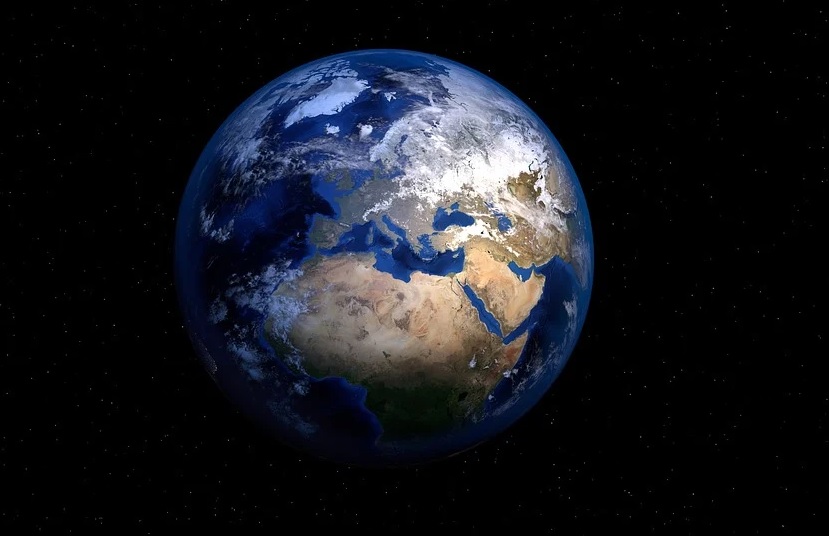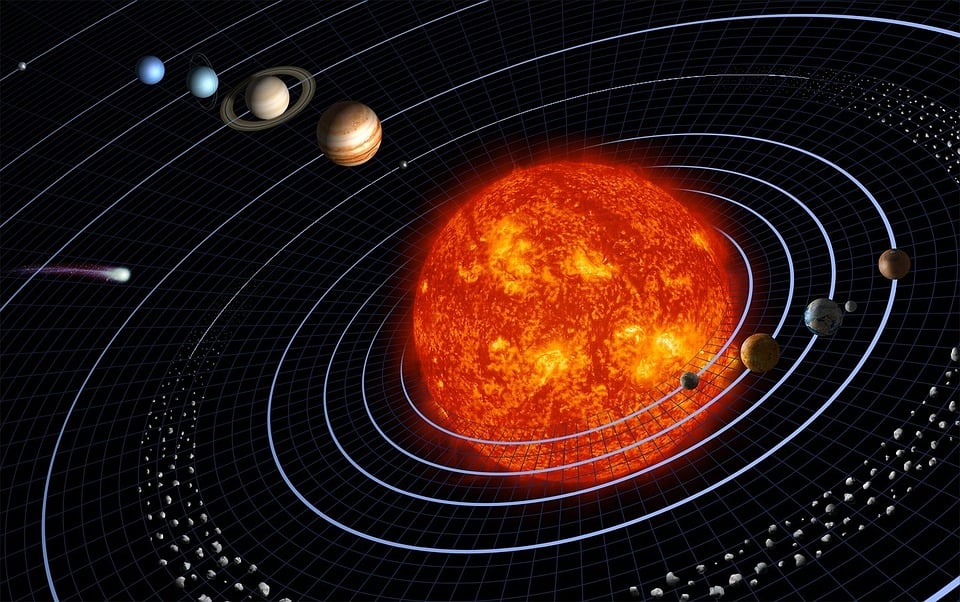Why Are Planets Round?
Written by Serene Joshua, a second-year undergraduate student.
Planets are round because of gravity, a force that pulls everything to the center.
Written by Serene Joshua, a second-year undergraduate student.
Have you ever wondered why the planets orbit the sun? Or why a planet spins on its axis?
Okay here’s a simple exercise, take a minute to think about something that all planets have in common.
Well… they’re all round!
Have you ever thought about why planets are round? Seems like a simple question, right?
Well, let’s think a bit further about why our planet and other planets in the solar system are the round shapes that they are.
Before we find out the details here’s a gist of what you can expect
Why are planets round? 3 quick points to remember
- Planets are round because of gravity, a force that pulls everything to the center.
- Due to how fast planets move, they have a bulge at the equator. So it’s never perfectly round
- Smaller celestial bodies are not round like planets because of their weak gravitational pull.
How exactly is the Earth round?

Put simply – the earth is round because of gravity.
The force that pulls objects toward the center of a planet is called gravity. Gravity is the reason why we aren’t floating, it’s the reason that planets orbit around the sun.
Although we can’t feel it, gravity is so strong that it pulls us toward the center of the earth. This is why when astronauts go to space they float because there is no gravity to keep them grounded!
Okay, so what does gravity have to do with the Earth’s roundness?
As mentioned before, the gravity of a planet makes it round by pulling all of its materials to the centre.
Planets form with materials in space that start to bump into each other, and these materials are dust and gas. Over time pieces of space materials come together and have a good enough amount of gravity. This gravitational force then starts to pull all of these materials toward the center. This is also known as the Nebular Hypothesis.
Over time gravity keeps pulling in materials and smoothing the planet out to make it as round as possible. The roundness comes from the fact that this pulling happens evenly across the planet.
That’s cool! So, all planets are perfectly round?

Well, technically planets are spheres – that’s a 3D circle.
But, here’s the thing, all planets are spheres except for one tiny detail. They all have a little bulge in the middle, along the equator.
More officially it is called the equilateral bulge. Because a planet spins really fast the middle portion of a planet, known as the equator, tries to spin out. But gravity is so powerful that it holds this equator region in place, leaving only a small bulge!
The reason for the bulge is that when a planet spins, things on the outer edge have to have to rotate faster than things on the inside to keep up with the speed. Everything is pulled inward by gravity like chains, but everything is pushed outward by the rotation’s speed.
So, all the planets are like a slightly squashed tomato, with a little bulge in the middle.
Due to Earth’s rotating rate of 1,674.4 kilometres per hour, the equilateral bulge of Earth is around 43 kilometres.
So if you wanted to take a trip around the Earth you can do it in two ways.
Firstly, you can travel from pole to pole, that is from the Arctic Ocean in the north and Antarctica in the south. That would mean you travel approximately 39,941 kilometres.
The other way to do this is along the equator which is 130 more Kilometres in distance!
Fun facts about planet shapes
Other planets also have equatorial bulges.
Saturn has the largest equatorial bulge of 11808 km.
Mercury and Venus are almost perfect spheres, with a very low bulge area.
One of the biggest factors affecting the bulge’s size appears to be a planet’s rate of rotation. So the faster it rotates, the larger the bulge.
An interesting mystery regarding the bulge is in our observations of the Sun.
According to recent data from the Solar Dynamics Observatory (SDO), the Sun’s bulge is far lower than anticipated—in fact, it is practically non-existent—despite the fact that the Sun rotates at a fast 7,000 km per hour at its equator.
But when they compared the sun with another star, Altair in the constellation of Aquila, they found that although it rotates much faster than the sun, about 17,000km per hour, it has been measured and found to have a bulge.
So why does the Sun not have a bulge? Well, for now, scientists don’t have an explanation.
What about other celestial bodies? Are they all round?
Because their gravity is insufficient to smooth out their shape, many of the smaller things in our solar system are not spherical.
The gravitational force of even smaller bodies, such as the 20-kilometer asteroids we have observed in recent spacecraft photos, is insufficient to make the strong asteroid round. These bodies don’t form spheres as a result. Instead, they continue to take on random, disorganised shapes.
What if planets weren’t round?
That’s a much-debated question with no real answer yet, but let’s consider it!
Even though this is highly unlikely for such a planet to exist, some scientists have wondered what a planet would be like if it were a cube.
Air and water would collect in the middle of each cube side, assuming that the rocky portion of the planet could somehow keep its cubeness.
Life would only exist along the edges of these lakes at the center, with insurmountable mountains at the cube’s corners and edges.

Better Your Child’s G.K. In 3 Minutes – Get This Free Newsletter
Get fun facts, simple and easy news, quizzes, and lots of other interesting things to read in your mailbox – for free! It’s what we call GK-on-the-go!
I Kid You Not now has a large readership across India and also parts of the world. If you want to write for us, you can submit your story here. You can also apply to become a news anchor. Apply here



Comments